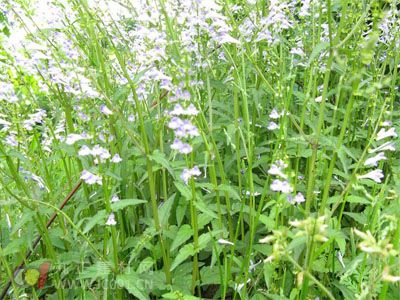Introduction to Scutellaria barbata Cultivation Technology:
Scutellaria barbata, commonly known as Hedyotis diffusa, is a medicinal herb widely used in traditional Chinese medicine. To grow it successfully, proper land selection and preparation are essential. The best soil type for planting is loose, well-drained sandy loam or loam. Before sowing, the field should be plowed deeply to ensure good aeration and root development. A base fertilizer of about 2000 kg of farmyard manure per acre is recommended, followed by thorough leveling of the field. Raised beds should be made with a width of approximately 1.3 meters to improve drainage and facilitate management.
Propagation Methods: Scutellaria barbata can be propagated through seeds or vegetatively via ramets. (1) Seed propagation is the most common method. Sowing is typically done from late September to early October using either broadcast or drill seeding. Rows should be spaced 25–30 cm apart, with furrows about 4 cm deep. Alternatively, holes can be dug at intervals of about 27 cm for individual planting. Seeds should be mixed with composted manure ash before being evenly distributed into the furrows or holes. A thin layer of fine soil or grass ash (no more than 0.5 cm thick) is then applied to cover the seeds. Keeping the soil consistently moist after sowing is crucial for germination, which usually occurs within 20 days. About 1.5–2 kg of seeds per acre is sufficient for optimal growth. (2) Vegetative propagation through ramets is also effective, especially during spring and summer. Healthy, disease-free plants are selected, and their old roots are carefully dug up. Each plant should have 3–4 healthy seedlings, which are then planted at a spacing of about 27 cm apart.

Field Management:
After germination, seedlings should be thinned to maintain a spacing of 4–5 cm between them. Any weak or missing seedlings should be replaced promptly. When transplanting, it's important to keep the roots intact and water them thoroughly after planting. Regular weeding and cultivation are necessary to prevent competition from weeds and to maintain soil aeration. These tasks should be carried out after each harvest to ensure the health of the plants. In addition, top-dressing with human and animal manure (about 2000 kg per mu) should be done together with weeding to provide essential nutrients.
Pest Control:
Scutellaria barbata is generally resistant to diseases, but aphids and black worms may appear during the flowering stage. Aphids can be controlled using dimethoate, while black worms can be managed by spraying a 50% dichlorvos solution diluted to 1000 times. Timely application of these treatments helps protect the crop and maintain its quality.
Seed Harvesting and Storage:
From May to June, when the seeds begin to mature, the fruit branches should be harvested in batches. After drying, the seeds are separated from the stems and impurities. They are then stored in dry, well-ventilated bags to preserve their viability. Unlike some other medicinal plants, Scutellaria barbata does not need to be kept in the field for long. It is typically renewed every 3–4 years by replanting new root seedlings, ensuring consistent yields and quality over time.
Smart Light,Smart Strip Light,Smart Ceiling Light,Smart Breaker
JIANGMEN MOSCOT OPTOELECTRONIC TECHNOLOGY CO.,LTD. , https://www.sensorsled.com